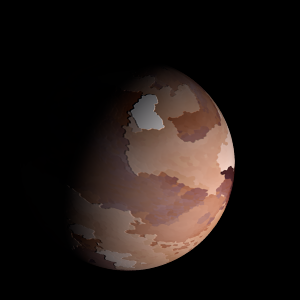|
|
Space Astro
|
Info for exoplanet "Rwan"
| Scientific (actual) data |
|---|
| Name | Kepler-838 b |
| Planet status | Confirmed |
| Radius | 0.244 |
| Orbital period | 15.7496 |
| Discovered | 2016 |
| Updated | 2021-02-05 |
| Tconj | 2454980 |
| Publication | Announced on a website |
| Detection type | Primary Transit |
| Alternate names | 2MASS J19014452+4558336 b, K01410.01, KIC 9391506 b, KOI-1410 b, KOI-1410.01, WISE J190144.55+455834.2 b |
| Star name | Kepler-838 |
| Right ascension | 285.44° |
| Declination | 45.98° |
| Mag j | 14.186 |
| Mag h | 13.855 |
| Mag k | 13.761 |
| Star distance | 1210 |
| Star metallicity | -0.06 |
| Star mass | 0.98 |
| Star radius | 0.96 |
| Star age | 4.17 |
| Star temperature | 5770 |
| Star alternate names | 2MASS J19014452+4558336, KIC 9391506, KOI-1410, WISE J190144.55+455834.2 |
| Wikipedia article | Kepler-838 b |
Back
| |
| Fictional info (?) |
|---|
| Suggested name | Rwan |
| Planet type | Cold planet |
|
| Atmosphere | Molecular hydrogen | 49% |
| Carbonyl sulfide | 20% |
| Ammonia | 17% |
| Water vapor | 14% |
| Atmospheric pressure | 0.006 bar |
 |
| Moon | Yuanlye | Very small slightly egg-shaped crater-filled comet |
| Chaoch-wangj | Very small slightly egg-shaped gaseous asteroid |
| Yozhouq Ang | Small irregular crater-filled asteroid |
| Yizenxer-cyou | Large irregular rocky moon |
| Google search for Rwan |
|
Website by Joachim Michaelis
|
|
|
|